Photo

This seems like something everyone should know if they’re in the sciences and/or interested in reading scientific papers.
165K notes
·
View notes
Text
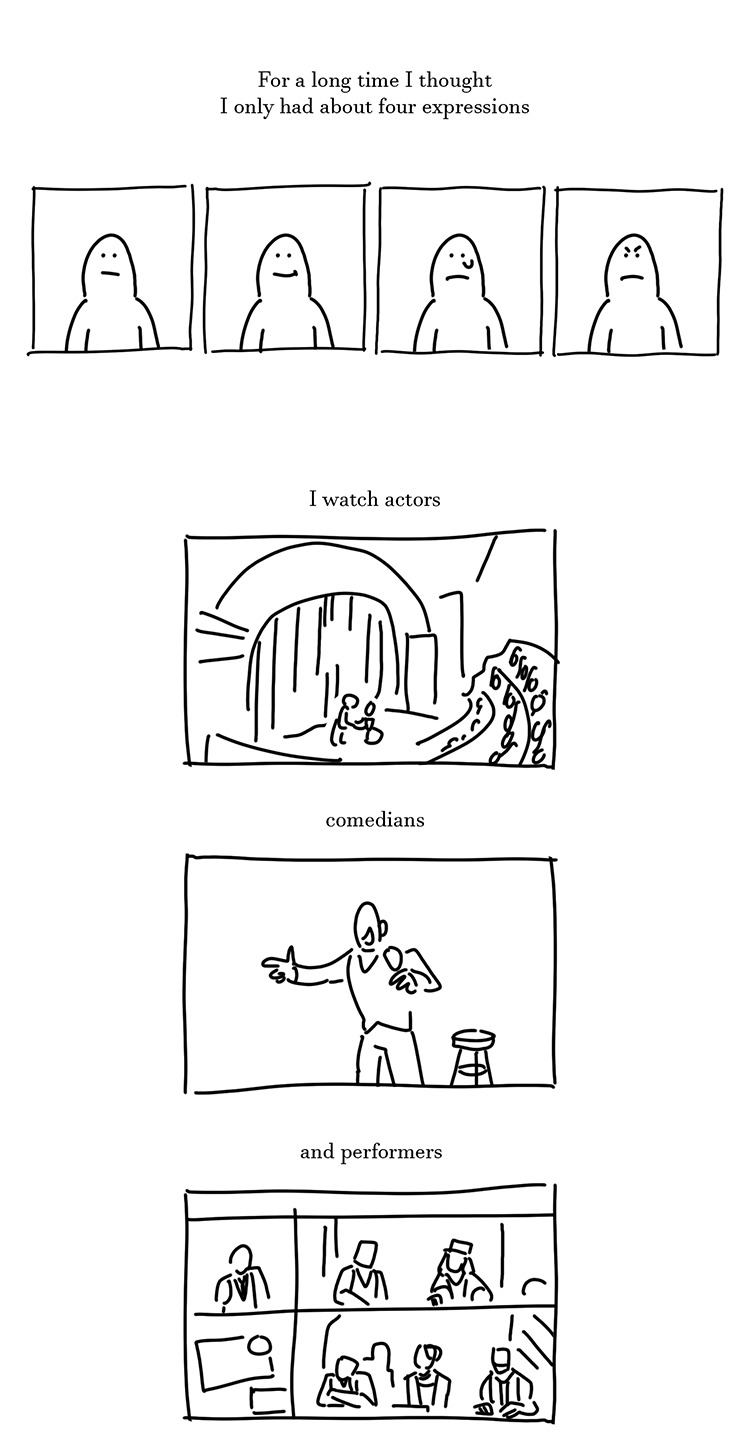

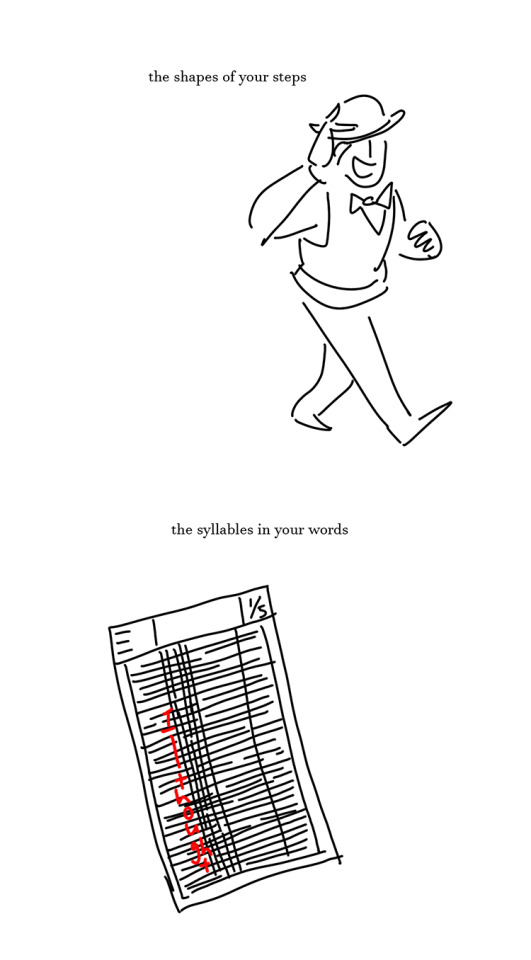
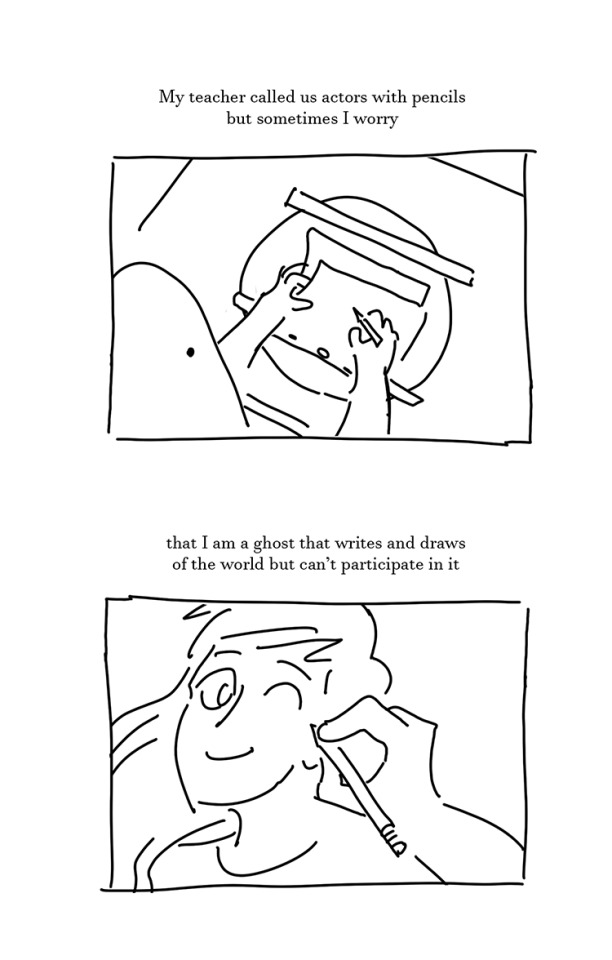


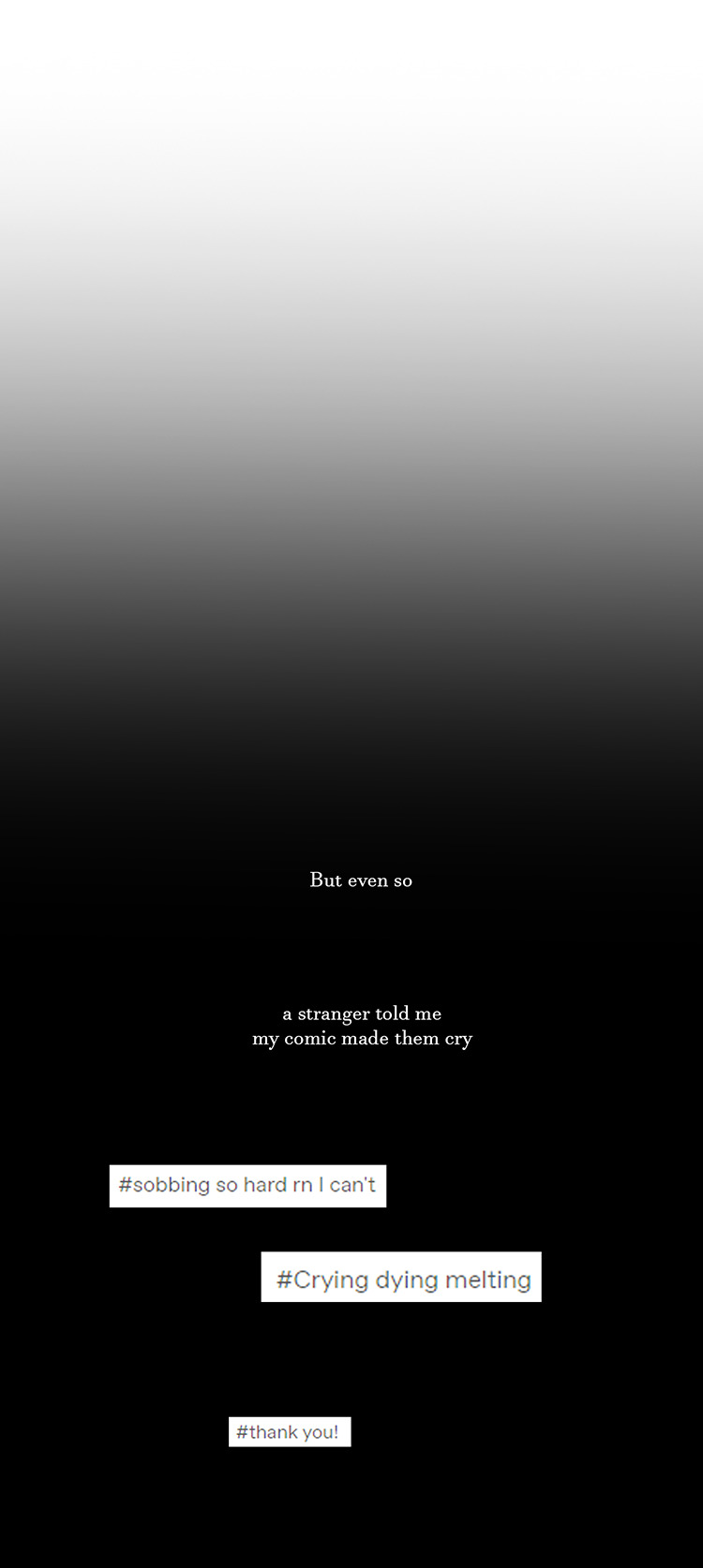

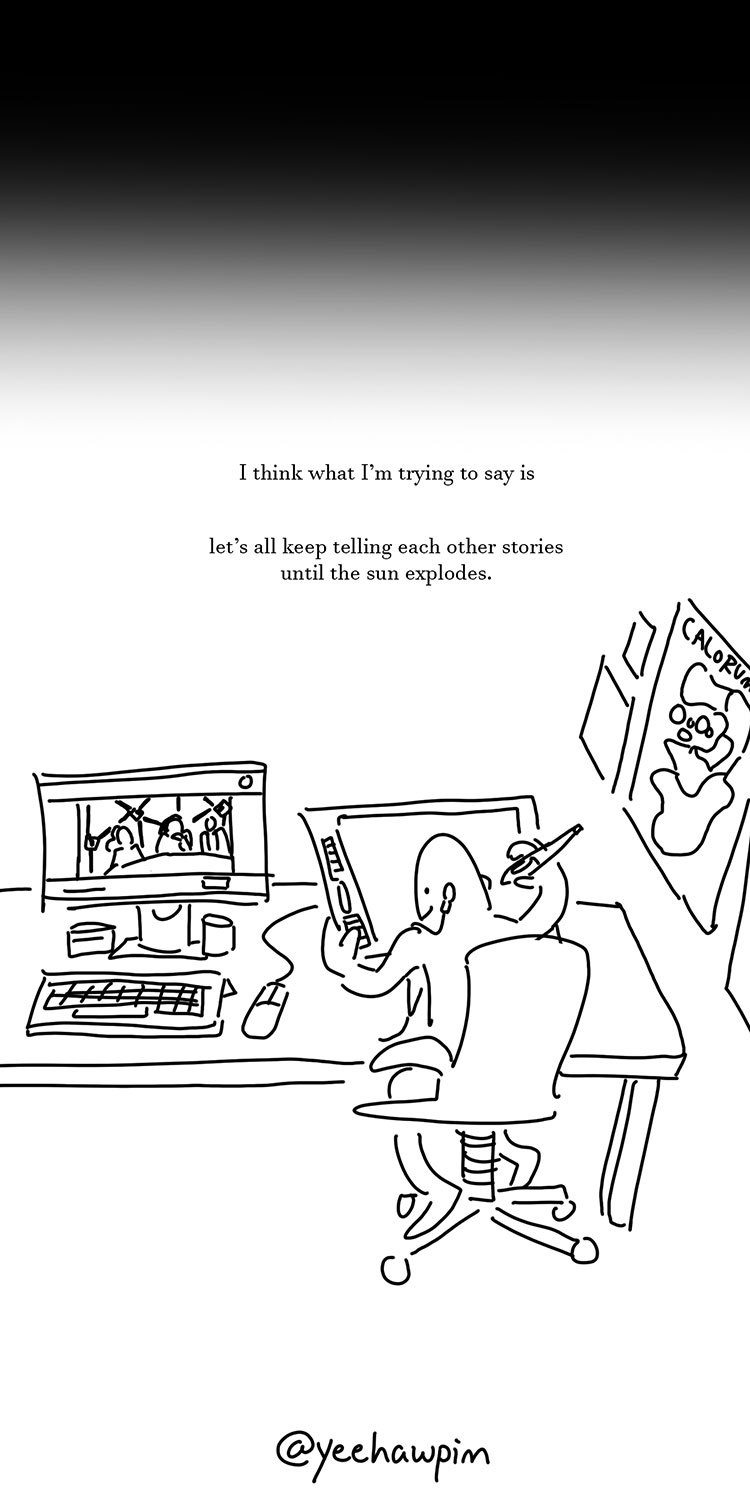
a comic about different types of storytellers
#not a gator#comic about making comics#heartwarming#some nice warm lemon tea for the soul#i hope you tell stories and i tell stories#and the ones we tell them to make stories from them too#and maybe our stories will meet one day by someone else and make another brand new story#and maybe we can keep doing that until the sun explodes
113K notes
·
View notes
Text
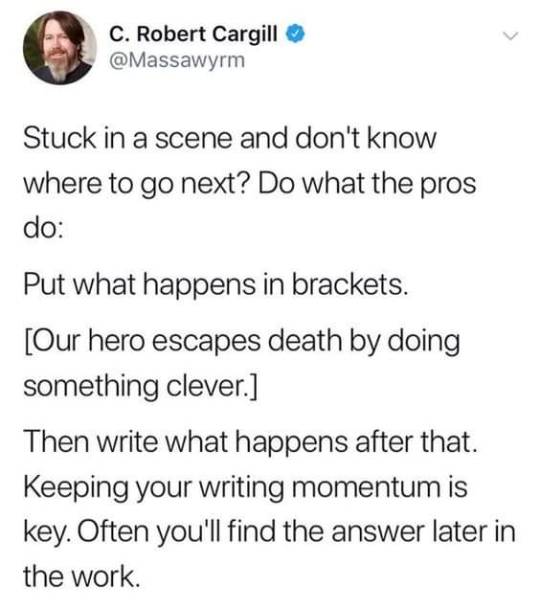
#not a gator#writing tips#tips when you get stuck#brackets#first draft#do you want a nice tag? here is a nice tag ig#have a good day if you find this
229K notes
·
View notes
Photo

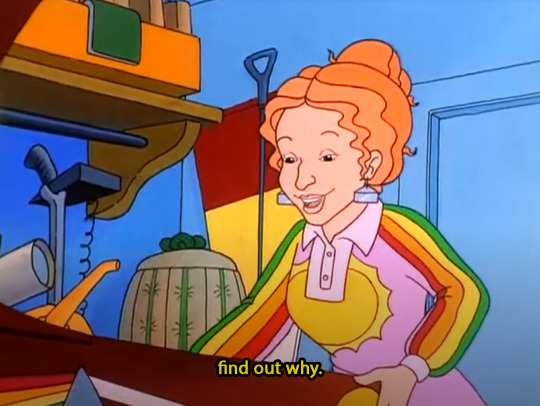
#not a gator#the magic school bus#motivational advice i guess?#ms frizzle#never stop pursuing questions.#when you succeed contemplate how to get even better#when you fail figure out why and move forward
132K notes
·
View notes
Text
To Write Better Antagonists, Have Them Embody the Protagonist's Struggles
(Spoilers for The Devil Wears Prada, Avatar the Last Airbender, Kung Fu Panda 2, and The Hunger Games triology).
Writing antagonists and villains can be hard, especially if you don't know how to do so.
I think a lot of writers' first impulse is to start off with a placeholder antagonist, only to find that this character ends up falling flat. They finish their story only for readers to find the antagonist is not scary or threatening at all.
Often the default reaction to this is to focus on making the antagonist meaner, badder, or scarier in whatever way they can- or alternatively they introduce a Tragic Backstory to make them seem broken and sympathetic. Often, this ends up having the exact opposite effect. Instead of a compelling and genuinely terrifying villain, the writer ends up with a Big Bad Edge Lord who the reader just straight up does not care about, or actively rolls their eyes at (I'm looking at you, Marvel).
What makes an antagonist or villain intimidating is not the sheer power they hold, but the personal or existential threat they pose to the protagonist. Meaning, their strength as a character comes from how they tie into the themes of the story.
To show what I mean, here's four examples of the thematic roles an antagonist can serve:
1. A Dark Reflection of the Protagonist
The Devil Wears Prada
Miranda Priestly is initially presented as a terrible boss- which she is- but as the movie goes on, we get to see her in a new light. We see her as an bonafide expert in her field, and a professional woman who is incredible at what she does. We even begin to see her personal struggles behind the scenes, where it’s clear her success has come at a huge personal cost. Her marriages fall apart, she spends ever waking moment working, and because she’s a woman in the corporate world, people are constantly trying to tear her down.
The climax of the movie, and the moment that leaves the viewer most disturbed, does not feature Miranda abusing Andy worse than ever before, but praising her. Specifically, she praises her by saying “I see a great deal of myself in you.” Here, we realize that, like Miranda, Andy has put her job and her career before everything else that she cares about, and has been slowly sacrificing everything about herself just to keep it. While Andy's actions are still a far cry from Miranda's sadistic and abusive managerial style, it's similar enough to recognize that if she continues down her path, she will likely end up turning into Miranda.
In the movie's resolution, Andy does not defeat Miranda by impressing her or proving her wrong (she already did that around the half way mark). Instead, she rejects the values and ideals that her toxic workplace has been forcing on her, and chooses to leave it all behind.
2. An Obstacle to the Protagonist's Ideals
Avatar: The Last Airbender
Fire Lord Ozai is a Big Bad Baddie without much depth or redemptive qualities. Normally this makes for a bad antagonist (and it's probably the reason Ozai has very little screen time compared to his children), but in Avatar: The Last Airbender, it works.
Why?
Because his very existence is a threat to Aang's values of nonviolence and forgiveness.
Fire Lord Ozai cannot be reasoned with. He plans to conquer and burn down the world, and for most of the story, it seems that the only way to stop him is to kill him, which goes against everything Aang stands for. Whether or not Aang could beat the Fire Lord was never really in question, at least for any adults watching the show. The real tension of the final season came from whether Aang could defeat the Fire Lord without sacrificing the ideals he inherited from the nomads; i.e. whether he could fulfill the role of the Avatar while remaining true to himself and his culture.
In the end, he manages to find a way: he defeats the Fire Lord not by killing him, but by stripping him of his powers.
3. A Symbol of the Protagonist's Inner Struggle
Kung Fu Panda 2
Kung Fu Panda 2 is about Po's quest for inner peace, and the villain, Lord Shen, symbolizes everything that's standing in his way.
Po and Lord Shen have very different stories that share one thing in common: they both cannot let go of the past. Lord Shen is obsessed with proving his parents wrong and getting vengeance by conquering all of China. Po is struggling to come to terms with the fact that he is adopted and is desperate to figure out who he is and why he ended up left in a box of radishes as a baby.
Lord Shen symbolizes Po's inner struggle in two main ways: one, he was the source of the tragedy that separated him from his parents, and two, he reinforces Po's negative assumptions about himself. When Po realizes that Lord Shen knows about his past and confronts him, Lord Shen immediately tells Po exactly what he's afraid of hearing: that his parents abandoned him because they didn't love him. Po and the Furious Five struggle to beat Shen not because he's powerful, but because Po can't let go of the past, and this causes him to repeatedly freeze up in battle, which Shen uses to his advantage.
Po overcomes Shen when he does the one thing Shen is incapable of: he lets go of the past and finds inner peace. Po comes to terms with his tragic past and recognizes that it does not define him, while Shen holds on to his obsession of defying his fate, which ultimately leads to his downfall.
4. A Representative of a Harsh Reality or a Bigger System
The Hunger Games
We don't really see President Snow do all that much on his own. Most of the direct conflict that Katniss faces, but with his underlings and the larger Capitol government. The few interactions we see between her and President Snow are mainly the two of them talking, and this is where we see the kind of threat he poses.
President Snow never lies to Katniss, not even once, and this is the true genius behind his character. He doesn't have to lie to or deceive Katniss, because the truth is enough to keep her complicit.
Katniss knows that fighting Snow and the Capital will lead to total war and destruction- the kind where there are survivors, but no winners. Snow tells her to imagine thousands upon thousands of her people dead, and that's exactly what happens. The entirety of District 12 gets bombed to ashes, Peeta gets brainwashed and turned into a human weapon, and her sister Prim, the very person she set out to protect at the beginning of the story, dies just before the Capitol's surrender. The districts won, but at a devastating cost.
Even after President Snow is captured and put up for execution, he continues to hurt Katniss by telling her the truth. He tells her that the bombs that killed her sister Prim were not sent by him, but by the people on her side. He brings to her attention that the rebellion she's been fighting for might just implement a regime just as oppressive and brutal as the one they overthrew and he's right.
In the end, Katniss is not the one to kill President Snow. She passes up her one chance to kill him to take down the new threat of President Coin.
3K notes
·
View notes
Text
No paywall version here.
"Two and a half years ago, when I was asked to help write the most authoritative report on climate change in the United States, I hesitated...
In the end, I said yes, but reluctantly. Frankly, I was sick of admonishing people about how bad things could get. Scientists have raised the alarm over and over again, and still the temperature rises. Extreme events like heat waves, floods and droughts are becoming more severe and frequent, exactly as we predicted they would. We were proved right. It didn’t seem to matter.
Our report, which was released on Tuesday, contains more dire warnings. There are plenty of new reasons for despair. Thanks to recent scientific advances, we can now link climate change to specific extreme weather disasters, and we have a better understanding of how the feedback loops in the climate system can make warming even worse. We can also now more confidently forecast catastrophic outcomes if global emissions continue on their current trajectory.
But to me, the most surprising new finding in the Fifth National Climate Assessment is this: There has been genuine progress, too.
I’m used to mind-boggling numbers, and there are many of them in this report. Human beings have put about 1.6 trillion tons of carbon in the atmosphere since the Industrial Revolution — more than the weight of every living thing on Earth combined. But as we wrote the report, I learned other, even more mind-boggling numbers. In the last decade, the cost of wind energy has declined by 70 percent and solar has declined 90 percent. Renewables now make up 80 percent of new electricity generation capacity. Our country’s greenhouse gas emissions are falling, even as our G.D.P. and population grow.
In the report, we were tasked with projecting future climate change. We showed what the United States would look like if the world warms by 2 degrees Celsius. It wasn’t a pretty picture: more heat waves, more uncomfortably hot nights, more downpours, more droughts. If greenhouse emissions continue to rise, we could reach that point in the next couple of decades. If they fall a little, maybe we can stave it off until the middle of the century. But our findings also offered a glimmer of hope: If emissions fall dramatically, as the report suggested they could, we may never reach 2 degrees Celsius at all.
For the first time in my career, I felt something strange: optimism.
And that simple realization was enough to convince me that releasing yet another climate report was worthwhile.
Something has changed in the United States, and not just the climate. State, local and tribal governments all around the country have begun to take action. Some politicians now actually campaign on climate change, instead of ignoring or lying about it. Congress passed federal climate legislation — something I’d long regarded as impossible — in 2022 as we turned in the first draft.
[Note: She's talking about the Inflation Reduction Act and the Infrastructure Act, which despite the names were the two biggest climate packages passed in US history. And their passage in mid 2022 was a big turning point: that's when, for the first time in decades, a lot of scientists started looking at the numbers - esp the ones that would come from the IRA's funding - and said "Wait, holy shit, we have an actual chance."]
And while the report stresses the urgency of limiting warming to prevent terrible risks, it has a new message, too: We can do this. We now know how to make the dramatic emissions cuts we’d need to limit warming, and it’s very possible to do this in a way that’s sustainable, healthy and fair.
The conversation has moved on, and the role of scientists has changed. We’re not just warning of danger anymore. We’re showing the way to safety.
I was wrong about those previous reports: They did matter, after all. While climate scientists were warning the world of disaster, a small army of scientists, engineers, policymakers and others were getting to work. These first responders have helped move us toward our climate goals. Our warnings did their job.
To limit global warming, we need many more people to get on board... We need to reach those who haven’t yet been moved by our warnings. I’m not talking about the fossil fuel industry here; nor do I particularly care about winning over the small but noisy group of committed climate deniers. But I believe we can reach the many people whose eyes glaze over when they hear yet another dire warning or see another report like the one we just published.
The reason is that now, we have a better story to tell. The evidence is clear: Responding to climate change will not only create a better world for our children and grandchildren, but it will also make the world better for us right now.
Eliminating the sources of greenhouse gas emissions will make our air and water cleaner, our economy stronger and our quality of life better. It could save hundreds of thousands or even millions of lives across the country through air quality benefits alone. Using land more wisely can both limit climate change and protect biodiversity. Climate change most strongly affects communities that get a raw deal in our society: people with low incomes, people of color, children and the elderly. And climate action can be an opportunity to redress legacies of racism, neglect and injustice.
I could still tell you scary stories about a future ravaged by climate change, and they’d be true, at least on the trajectory we’re currently on. But it’s also true that we have a once-in-human-history chance not only to prevent the worst effects but also to make the world better right now. It would be a shame to squander this opportunity. So I don’t just want to talk about the problems anymore. I want to talk about the solutions. Consider this your last warning from me."
-via New York Times. Opinion essay by leading climate scientist Kate Marvel. November 18, 2023.
33K notes
·
View notes
Text
''Useless'' Writing Reminders
Save your documents. Strive to be safe, not sorry.
Back-up your documents. Strive to be safe, not sorry.
Placeholder names can quickly turn into forever names. Picking name(s) on a whim can lead to great things, or it can become your worst nightmare (😁).
Your writing has value. Yes, even the most inadequate of writing. You don't have to boast or even like everything you've ever written, but even the most questionable of writing will have contributed to your growth as a storyteller. Cherish it for what it is.
You can take a break. It is absolutely okay.
First drafts are scary. But you know what's more scary? Not having a draft at all.
Using clichés or ''overdone'' tropes will not kill your story. Firstly, tropes are building blocks. Secondly, humans actively search to consume stories revolving around these tropes.
Write your heart out. Boast about your writing. Boast about your friends' and fellow writers' writing. Everyone deserves recognition, even you, from within your own heart. (Sorry. That's really cheesy. But it's true).
10K notes
·
View notes
Text
Just a bunch of Useful websites - Updated for 2023
Removed/checked all links to make sure everything is working (03/03/23). Hope they help!
Sejda - Free online PDF editor.
Supercook - Have ingredients but no idea what to make? Put them in here and it'll give you recipe ideas.
Still Tasty - Trying the above but unsure about whether that sauce in the fridge is still edible? Check here first.
Archive.ph - Paywall bypass. Like 12ft below but appears to work far better and across more sites in my testing. I'd recommend trying this one first as I had more success with it.
12ft – Hate paywalls? Try this site out.
Where Is This - Want to know where a picture was taken, this site can help.
TOS/DR - Terms of service, didn't read. Gives you a summary of terms of service plus gives each site a privacy rating.
OneLook - Reverse dictionary for when you know the description of the word but can't for the life of you remember the actual word.
My Abandonware - Brilliant site for free, legal games. Has games from 1978 up to present day across pc and console. You'll be surprised by some of the games on there, some absolute gems.
Project Gutenberg – Always ends up on these type of lists and for very good reason. All works that are copyright free in one place.
Ninite – New PC? Install all of your programs in one go with no bloat or unnecessary crap.
PatchMyPC - Alternative to ninite with over 300 app options to keep upto date. Free for home users.
Unchecky – Tired of software trying to install additional unwanted programs? This will stop it completely by unchecking the necessary boxes when you install.
Sci-Hub – Research papers galore! Check here before shelling out money. And if it’s not here, try the next link in our list.
LibGen – Lots of free PDFs relate primarily to the sciences.
Zotero – A free and easy to use program to collect, organize, cite and share research.
Car Complaints – Buying a used car? Check out what other owners of the same model have to say about it first.
CamelCamelCamel – Check the historical prices of items on Amazon and set alerts for when prices drop.
Have I Been Pawned – Still the king when it comes to checking if your online accounts have been released in a data breach. Also able to sign up for email alerts if you’ve ever a victim of a breach.
I Have No TV - A collection of documentaries for you to while away the time. Completely free.
Radio Garden – Think Google Earth but wherever you zoom, you get the radio station of that place.
Just The Recipe – Paste in the url and get just the recipe as a result. No life story or adverts.
Tineye – An Amazing reverse image search tool.
My 90s TV – Simulates 90’s TV using YouTube videos. Also has My80sTV, My70sTV, My60sTV and for the younger ones out there, My00sTV. Lose yourself in nostalgia.
Foto Forensics – Free image analysis tools.
Old Games Download – A repository of games from the 90’s and early 2000’s. Get your fix of nostalgia here.
Online OCR – Convert pictures of text into actual text and output it in the format you need.
Remove Background – An amazingly quick and accurate way to remove backgrounds from your pictures.
Twoseven – Allows you to sync videos from providers such as Netflix, Youtube, Disney+ etc and watch them with your friends. Ad free and also has the ability to do real time video and text chat.
Terms of Service, Didn’t Read – Get a quick summary of Terms of service plus a privacy rating.
Coolors – Struggling to get a good combination of colors? This site will generate color palettes for you.
This To That – Need to glue two things together? This’ll help.
Photopea – A free online alternative to Adobe Photoshop. Does everything in your browser.
BitWarden – Free open source password manager.
Just Beam It - Peer to peer file transfer. Drop the file in on one end, click create link and send to whoever. Leave your pc on that page while they download. Because of how it works there are no file limits. It's genuinely amazing. Best file transfer system I have ever used.
Atlas Obscura – Travelling to a new place? Find out the hidden treasures you should go to with Atlas Obscura.
ID Ransomware – Ever get ransomware on your computer? Use this to see if the virus infecting your pc has been cracked yet or not. Potentially saving you money. You can also sign up for email notifications if your particular problem hasn’t been cracked yet.
Way Back Machine – The Internet Archive is a non-profit library of millions of free books, movies, software, music, websites and loads more.
Rome2Rio – Directions from anywhere to anywhere by bus, train, plane, car and ferry.
Splitter – Seperate different audio tracks audio. Allowing you to split out music from the words for example.
myNoise – Gives you beautiful noises to match your mood. Increase your productivity, calm down and need help sleeping? All here for you.
DeepL – Best language translation tool on the web.
Forvo – Alternatively, if you need to hear a local speaking a word, this is the site for you.
For even more useful sites, there is an expanded list that can be found here.
#not a gator#useful links#lots and lots of good links#music#reading#writing#traveling#way too many to list honestly
76K notes
·
View notes
Note
Hello! This is my first time asking but I could I have some advice on how to write a story that starts in the climax of the plot already? The context is my MC woke up and they are not able to remember anything, but suddenly, he just woke up in the wards of his family (a very strong political figure in their world might I add) whom he told what his life was but the narratives they are telling does not match even in the slightest of the flashback that's plaguing him as the time stretches. And they were in the middle of the war, too. I'm having a hard time to achieve that mind-blowing... thrill I suppose? They also got a love interest that is unmistakably not the one his family claimed ‘their-spouse’ to be.
Starting with Inciting Incident
Remember: your story's climax is the moment your character faces off against the antagonist once and for all. While some stories do start at the climax, and then flashback to the beginning of the story to build back up to it, it doesn't mean you start at the climax and move forward from there.
I think there can be a lot of confusion with the concept of "In Media Res" which a lot of people confuse as meaning starting in the literal middle of the story, or at the inciting incident or climax. Instead, "in media res" simply means starting in the middle of the action. That action can be the inciting incident, the climax, or the literal middle, but again, it doesn't mean the story moves forward from there.
If you're starting your story at the point where your character wakes up without their memories, this isn't the climax but rather the inciting incident. This is the moment when their life and world are turned upside down. Starting at this moment in a story about memory loss is a great way to go, because your reader knows as little about the character and their world as the character does. It puts the reader in your character's shoes right from the start, and they'll be learning everything right alongside your character.
So, that's really the key is to make sure you're filling in the gaps left by not having an exposition. You'll need to make sure to fairly quickly illustrate this character's natural personality, the world they've woken up into, and what their life was apparently like before they lost their memories. If they're being lied to, you may want to build in some clues that hint at what their actual life was like--such as feeling a place is familiar to them even if they're told "no, you would never have been to such a place."
As far as creating that thrill in that opening moment, it's really going to come down to emotional and sensory description. In lieu of recognizing who they are, where they are, and what happened to them, they're going to focus on their immediate surroundings. What can they see, hear, smell, taste, feel? What does that sensory input tell them about who they are and where they are? How does that sensory input--and what they can learn from it--make them feel? What emotions are they feeling as they process this unfamiliar environment and realize they have no idea who they are, where they are, or what happened to them?
I hope that helps!
•••••••••••••••••••••••••••••••••
I’ve been writing seriously for over 30 years and love to share what I’ve learned. Have a writing question? My inbox is always open!
LEARN MORE about WQA
SEE MY ask policies
VISIT MY Master List of Top Posts
COFFEE & COMMISSIONS ko-fi.com/wqa
77 notes
·
View notes
Text
Everything You Need To Know About Writing Bruises

Welcome to the latest instalment in my ongoing series on crafting realistic wounds in fiction. After delving into stab wounds, burns, and gunshot wounds, we're turning our attention to another crucial element in bringing your characters and their stories to life: bruises.
Bruises are possibly the most common miswritten injury in fiction. As tempting as it might be to make the protagonist's skin bruise when the morally grey characters clutches her wrist, scenes like this only serve to ruin immersion and make your readers wonder whether this could realistically happen.
Unlike the other wound types I've covered in this series, the internet doesn't seem to have a lot of writing advice for bruises. So, here's my comprehensive guide to writing bruises.
Types of Bruises
Understanding Bruise Formation:
Bruises are a common occurrence in everyday life, from the accidental bump into a table corner to the aftermath of an intense sporting event. But before we dive into the art of crafting realistic bruises in your writing, let's start by understanding how bruises form.
Bruises, also known as contusions, result from the rupture of blood vessels beneath the skin's surface, typically veins and capillaries. When these vessels break, blood leaks into the surrounding tissue. The body's natural response to this injury is to initiate the healing process, causing inflammation and discolouration.
Differentiating Types of Bruises:
Not all bruises are created equal. Understanding the various types of bruises will help you describe them accurately in your writing. Here, we'll explore the common distinctions among bruise types.
Contusions: Contusions are the most typical type of bruises. They often occur due to blunt force or trauma, resulting in pain and discolouration.
Subcutaneous Bruises: These are the most typical bruises resulting from blunt force trauma. Subcutaneous bruises appear as dark, discoloured areas under the skin and can change in colour as they heal, starting with red or purple and transitioning to green, yellow, and eventually fading away.
Hematoma: A hematoma is a more severe type of bruise caused by the collection of blood outside of blood vessels. Hematomas often appear as a raised lump under the skin and can take longer to heal.
Petechiae: Petechiae are tiny, red or purple pinpoint spots that can form when small blood vessels near the skin's surface break. These are often a sign of more severe underlying medical conditions.
Ecchymosis: Ecchymosis is a large bruise that covers a wider area, typically caused by substantial trauma or medical conditions. These bruises tend to be darker and may require more time to heal.
Tattoo Bruises: Sometimes, an object's pattern or texture may leave a distinct mark, resembling a tattoo. These can occur when someone is subjected to direct pressure from an object with an intricate or textured surface.
These distinctions will enable you to convey the type of bruise accurately in your storytelling, reflecting the nature and severity of the injury your character has endured. So, when crafting a scene in which your character sustains a bruise, you can choose the type that best suits your narrative.
Causes of Bruises:
Bruises can occur for various reasons, and knowing these causes will help you craft believable narratives. It's important to note that not every physical interaction results in a bruise, and your characters shouldn't bruise from actions that typically don't lead to bruising. For instance, someone holding another person's arm tightly is unlikely to cause a bruise.
Common Causes of Bruises:
Blunt Force: The most common cause of bruises is blunt force trauma. This can occur from falls, accidents, or impacts, such as bumping into furniture or being struck by an object.
Pinching or Squeezing: Intense pinching or squeezing, especially on delicate skin areas, can lead to bruises. For example, if a character pinches their arm or thigh too hard in frustration, a bruise may develop.
Repetitive Motion: Overusing or repeatedly striking a particular area, like through strenuous exercise or certain work activities, can cause tiny blood vessels to rupture and lead to bruising.
Medical Conditions: Some medical conditions, like blood disorders or certain medications, can make a person more prone to bruising.
Ageing: As skin becomes thinner and more fragile with age, it's more susceptible to bruising even from minor bumps or impacts.
It's crucial to consider the appropriateness of a bruise in your story. Understanding when and how a character can realistically develop a bruise will help maintain the credibility of your narrative.
Characteristics of Bruises:
Accurately depicting bruises in your writing involves considering various characteristics, such as:
Colour Changes: Bruises typically undergo a series of colour changes during the healing process. They usually start with shades of red, purple, or blue due to the initial bleeding under the skin. As the bruise heals, it can turn green, yellow, or brown before fading entirely. These colour shifts can be an essential detail when describing the progression of a character's injuries.
Size and Shape: The size and shape of a bruise depend on the impact's force and the underlying blood vessels' distribution. Bruises can be small, like a fingertip mark, or large, covering a significant portion of the body. Irregularly shaped bruises may indicate multiple impacts or trauma.
Tenderness and Swelling: A fresh bruise is often tender to the touch, and the area around it may be swollen. Describing your characters' reactions to this tenderness and swelling can make the injuries feel more lifelike.
Pain and Discomfort: Bruises can be painful, and the level of pain may vary depending on their size and location. Detailing your character's pain and discomfort can enhance the realism of your narrative.
Itching and Healing: As a bruise heals, it may become itchy. This can be an interesting detail to add, showing the progress of the injury and your character's recovery.
Duration: Mention the duration of a bruise. Some may heal relatively quickly, while others can linger for weeks. Knowing how long a character's bruise lasts can impact their daily life and the story's timeline.
Factors Affecting Bruise Appearance and Healing:
Bruises aren't one-size-fits-all injuries. Their appearance and healing process can vary based on several factors:
Location: Bruises can look different depending on where they occur on the body. For instance, a bruise on a bony area, like the shin, might appear more pronounced compared to a bruise on a fleshier part, like the thigh.
Age and Health: The age and overall health of your character play a significant role. Younger, healthier characters may heal faster and have bruises that change colour and fade more quickly. Conversely, older characters or those with health issues might have bruises that take longer to heal.
The severity of the Injury: The force and severity of the impact determine the size, shape, and colours of the bruise. Consider whether the injury was caused by a minor bump, a hard fall, or a violent struggle.
Character's Skin Tone: The appearance of a bruise can be affected by the character's skin tone. It might be more challenging to spot a bruise on darker skin, and the colours may appear differently.
Treatment and First Aid: The way a character treats a bruise can affect its healing. Mention how characters apply ice, warmth, or topical remedies to their bruises.
Character's Pain Tolerance: Some characters may have a higher pain tolerance and can bear a bruise without much discomfort, while others might find even a small bruise painful.
Clothing and Cover-Up: Characters may conceal bruises with clothing or makeup. This can impact how they are perceived by others.
By understanding these factors, you can tailor your descriptions to create a more authentic portrayal of bruises in your writing.
Healing Process of Bruises:
A key element in writing realistic bruises is depicting their healing process. Here's how to effectively describe it:
Gradual Changes: Highlight the evolving nature of the bruise over time. The progression of colours—red to blue, green, and yellow—is a visual cue that indicates the bruise's age. This chronological shift in colour offers readers insights into the passage of time within your narrative.
Concealment and Exposure: Address the issue of concealing or revealing the bruise. Depending on its location, characters may need to don concealing clothing, apply makeup, or use other means to hide or reveal their injuries. Such choices can significantly impact the character's interactions and relationships.
Medical Care: Mention whether the character seeks medical attention for their bruise. Medical professionals can provide insights into the severity of the injury and the potential complications that might arise during the healing process. Additionally, you can explore any treatments, remedies, or advice offered by healthcare providers.
Impact on the Character: Describe how the presence of a bruise affects the character's daily life, activities, and interactions with others. A prominent facial bruise, for instance, can influence the character's self-esteem, social interactions, or how they are perceived by those around them. Emotions and psychological effects should not be overlooked.
Varied Healing Timelines: Recognize that the healing process can vary from one character to another. Factors such as age, overall health, and the severity of the injury can affect how quickly the bruise fades. This variation can add depth and authenticity to your character's experiences.
Scarring and Discoloration: Note that severe injuries may leave lasting scars or discolouration on the skin. Explore any permanent marks or changes that remain after the bruise has healed.
By incorporating these aspects into your narrative, you can create a nuanced portrayal of the healing process of bruises and its impact on your characters.
I hope this blog on Everything You Need To Know About Writing Bruises will help you in your writing journey. Be sure to comment any tips of your own to help your fellow authors prosper, and follow my blog for new blog updates every Monday and Thursday.
Looking For More Writing Tips And Tricks?
Are you an author looking for writing tips and tricks to better your manuscript? Or do you want to learn about how to get a literary agent, get published and properly market your book? Consider checking out the rest of Haya’s book blog where I post writing and publishing tips for authors every Monday and Thursday! And don’t forget to head over to my TikTok and Instagram profiles @hayatheauthor to learn more about my WIP and writing journey!
#not a gator#writing tips#writing injuries realistically#writing injuries#writing bruises#writing wounds
723 notes
·
View notes
Text
CARNIVAL AU


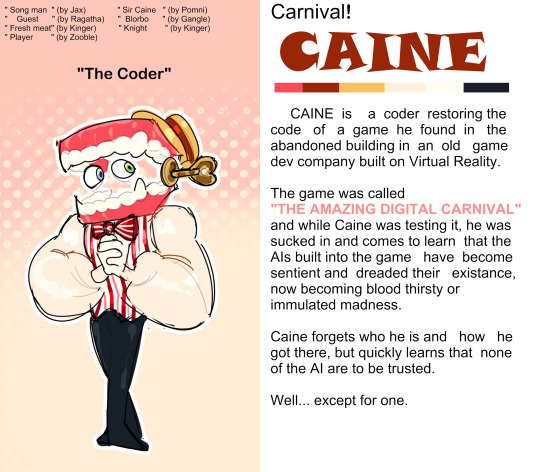

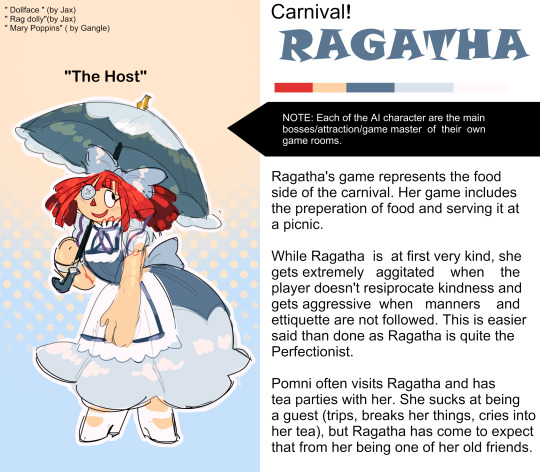
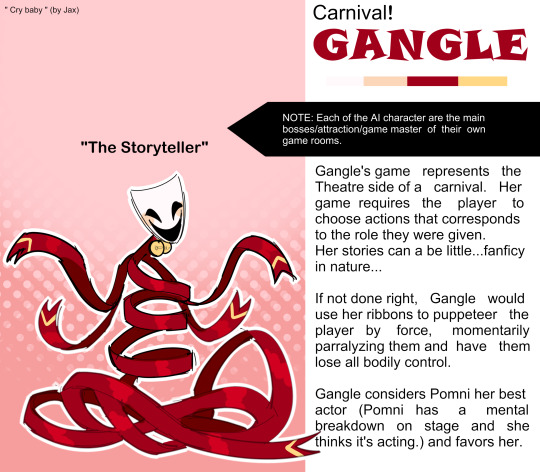
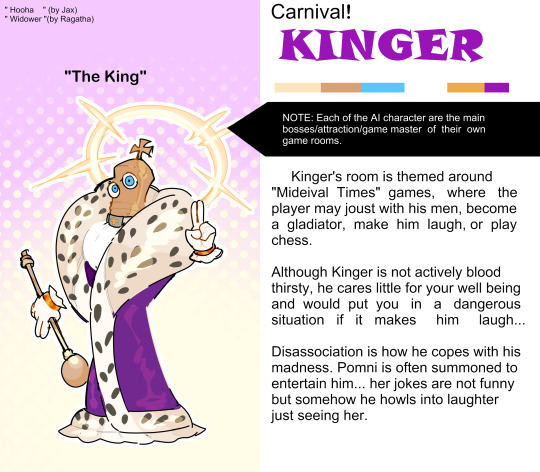
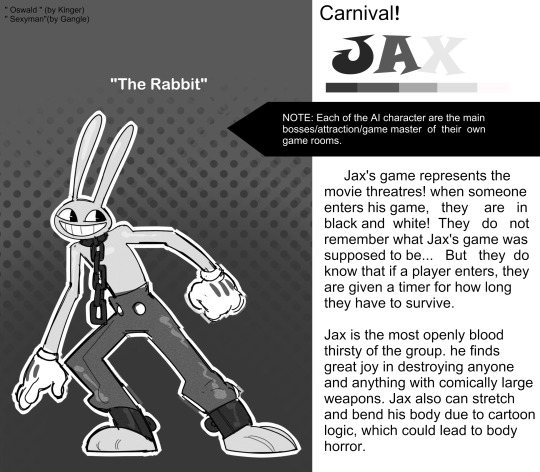
I wanted to try my own take at a sort of "swap au " :3! though-- it's more a "role swap" than anything else, haha!
I give yall Zooble another time cuz I'm sleepyyy
#not a gator#the amazing digital circus#tadc#tadc au#carnival au#neat art. i like the concept. good job
26K notes
·
View notes
Text
abandonware should be public domain. force companies to actively support and provide products if they don't wanna lose the rights to them
#not a gator#video games#biology#biological sciences#holy fuck yeah honestly a lot of this shit shouldn't be as legal as it is
104K notes
·
View notes
Text
pnat secret santa 2023
Hi everyone, we're back for another year! Make sure to read through this post for the introduction, application form, and schedule!
What Is Paranatural Secret Santa?
Paranatural Secret Santa is an event that takes place during the holiday season. You get assigned to a person to make a gift for, you create that gift, and you also receive a gift! This secret Santa is themed after the webcomic Paranatural, so if you are a fan of it and create fan content, this is perfect for you!
Gifts can be fanart, fanfic, panel edits, graphics, ect! Whatever you feel like creating.
Application Form
You can apply for the Secret Santa here! (x)
Schedule
November 20th - December 6th: applications open
December 7th - December 10th: applications closed, assignments created and sent out
December 11th - December 24th: working period
December 25th - January 21st: posting/receiving/extension period
Since the event got up and running later than usual this year, we're extending the posting period into late January. Make sure to tag this blog in your post and also use the tag pnatsecretsanta2023 so your gift can be reblogged!
If you have any questions/comments/concerns feel free to contact us! Thanks everyone, and let's have another awesome Secret Santa!
#paranatural#pnatsecretsanta2023#woohoo! Excited for another year of pnat secret santa!#can't wait to see what everyone makes and gets!
32 notes
·
View notes
Text
Short DPXDC Prompts #191
Soulmate au: you get injured, the soulmate keeps the weapon that injures them. Danny has a drawer in his room that’s filled with used bullets and knives and every weapon under the sun and his parents and himself are VERY concerned for his soulmates being. You know when like fairies walk and flowers spring up from their footsteps? Yeah Danny is like that but with weaponry and it’s very worrying.
#not a gator#haven't thought about either property in a long time#but damn is this funny#bury this man in boxes
2K notes
·
View notes
Text
we're sleeping on how varied crocodilians are in colour and pattern
Yacare caiman

Tomistoma

Cuban crocodile

Cuvier's dwarf caiman

West African crocodile

American alligator

Saltwater crocodile

New Guinea crocodile

#New Guinea crocodile#crocodile#alligator#caiman#cuiver's dwarf caiman#yacare caiman#tomistoma#american alligator#west african crocodile#cuban crocodile#i adore crocs. so many variations and colors!#and to think these little fellas haven't changed all that much in millions of years#there could've been so many different types too if they weren't all wiped out from extinction events long past#ahhh thinking of that makes my imagination soar
1K notes
·
View notes
Note
Do you have any advice for writing an intense, overwhelming chase scene?
So, this is a little unusual, in that it's something I haven't really thought a lot about.
For a real world situation, the process is to identify or create an opening, and escape. Usually this advice is more focused for situations for situations where someone's cornered you.
Also, the real world advice is to avoid a chase if at all possible. You don't want to get into a situation where you're directly testing your endurance against your enemy.
As for writing a chase scene. This is one of those times when you want to be efficient with your words, keep things as concise as possible. When you get more verbose it “slows down” the scene because it is literally slowing your reader's progress down.
Chases can be very logistically intensive for you, simply because you need a fairly coherent mental image of how the locations in your story fit together. Maps can be extremely helpful for this, whether you choose to share them or not.
I don't think I've talked about this on the blog, maps can be very helpful for getting a concrete image of how your world is put together, though, they can also, easily, start soaking up more time than the value they offer. That said, even pretty crude maps could be very useful in planning a chase scene. This is one of the times when your world needs to lock together into a unified space, instead of being able to move characters between loosely connected locations.
If you want the reader to have a detailed mental image for the locations, then you should probably have them in those spaces before the chase. Though, this is a situation where some, “stock locations,” could work for you. Liminal spaces can work pretty well for this, because most of your readers are going to have a preexisting basis for understanding what those areas look like. For example: even if their image of an airport causeway is different from yours, you'll both be close enough to the same space that you shouldn't run into many problems where you need to define the entire area.
It's also worth considering that as the chase progresses, it's possible to get gradually more verbose. As mentioned above, this will slow the reader, and as a result the scene, but it can convey the loss of inertia as your character tires or finds themselves having to slow down because they're now in unfamiliar (and possibly unsafe) territory, without being extremely direct about your character's exhaustion. This is an area that can benefit from some pretty careful word selection to hint at fatigue without outright stating it.
I do apologize that this is all pretty high level, concept advice, and a lot of this can be applied in other contexts. And, a lot of the above advice are things to keep in mind for all of your writing, but chases do stress these specific parts of your writing and world building.
Beyond that, it's the normal advice: Remember your world is a living place, so other people would be going about their daily lives while the chase rampages through. Remember persistence consequences, such as prior injuries, or injuries inflicted during the chase. Chases might lead into situations where other kinds of consequences might become unexpectedly relevant, such as your character being forced to run through the territory of a gang they angered earlier in the story. This is an opportunity to bring in unexpected consequences. Even if you don't stick to it, at least have an initial idea for what you want from the chase, then let the sequence play out as you go. (Cleaning this up is what rewrites are for, but it is important to let the chase flow, before you go back and worry about cleaning it up.)
Like I said at the beginning, this is something I don't generally think about, so it's been a bit before I could get back to this question, and I hope this helps.
-Starke
This blog is supported through Patreon. Patrons get access to new posts three days early, and direct access to us through Discord. If you’re already a Patron, thank you. If you’d like to support us, please consider becoming a Patron.
244 notes
·
View notes
Text
"Decrease the increase" is actually a completely reasonable thing to say, but it feels like it shouldn't be.
#not a gator#g forces#positive gs#negative gs#physics#acceleration#ahhh this is always fun to look into
7K notes
·
View notes